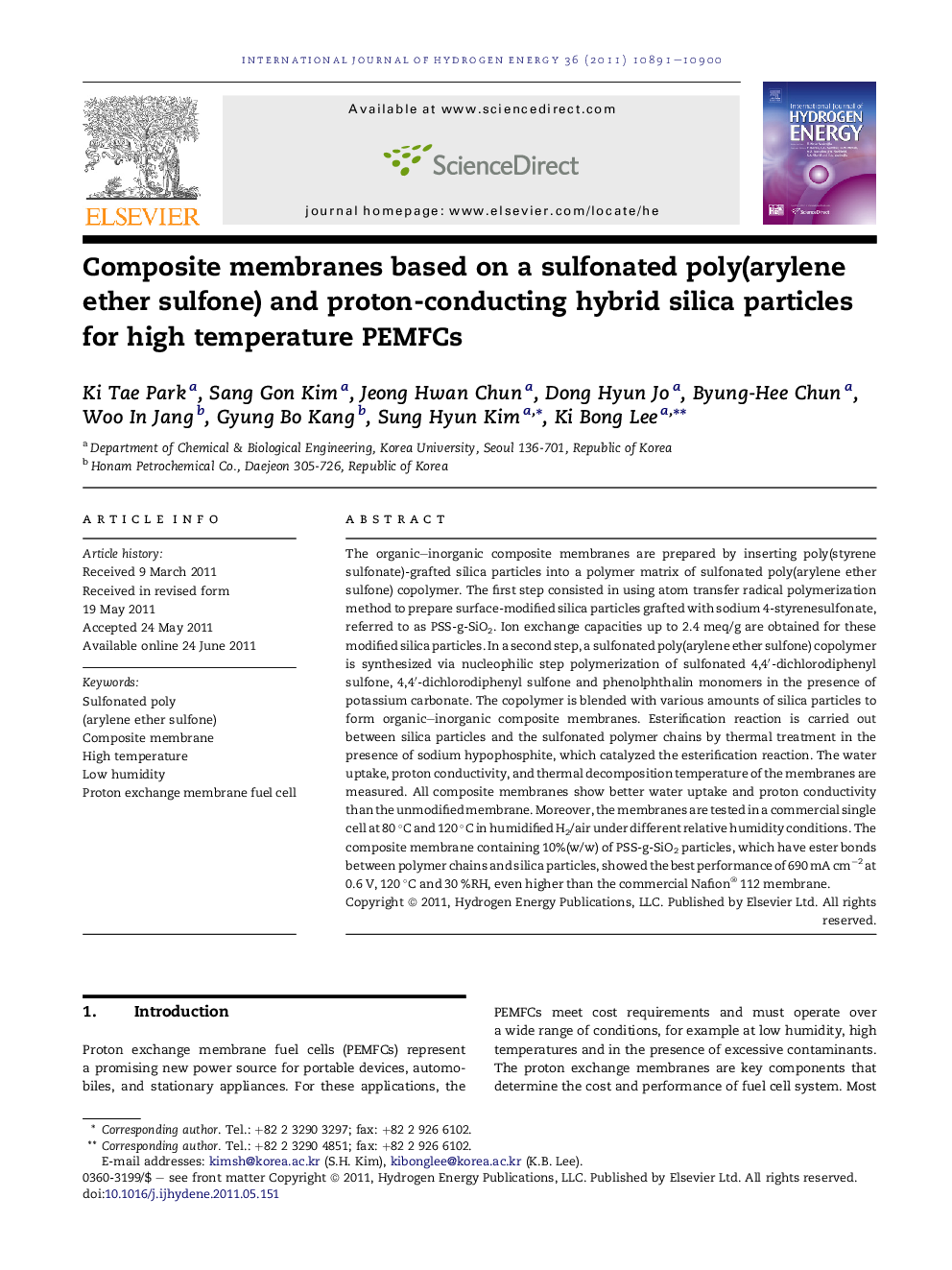| کد مقاله | کد نشریه | سال انتشار | مقاله انگلیسی | نسخه تمام متن |
|---|---|---|---|---|
| 1277559 | 1497576 | 2011 | 10 صفحه PDF | دانلود رایگان |

The organic–inorganic composite membranes are prepared by inserting poly(styrene sulfonate)-grafted silica particles into a polymer matrix of sulfonated poly(arylene ether sulfone) copolymer. The first step consisted in using atom transfer radical polymerization method to prepare surface-modified silica particles grafted with sodium 4-styrenesulfonate, referred to as PSS-g-SiO2. Ion exchange capacities up to 2.4 meq/g are obtained for these modified silica particles. In a second step, a sulfonated poly(arylene ether sulfone) copolymer is synthesized via nucleophilic step polymerization of sulfonated 4,4′-dichlorodiphenyl sulfone, 4,4′-dichlorodiphenyl sulfone and phenolphthalin monomers in the presence of potassium carbonate. The copolymer is blended with various amounts of silica particles to form organic–inorganic composite membranes. Esterification reaction is carried out between silica particles and the sulfonated polymer chains by thermal treatment in the presence of sodium hypophosphite, which catalyzed the esterification reaction. The water uptake, proton conductivity, and thermal decomposition temperature of the membranes are measured. All composite membranes show better water uptake and proton conductivity than the unmodified membrane. Moreover, the membranes are tested in a commercial single cell at 80 °C and 120 °C in humidified H2/air under different relative humidity conditions. The composite membrane containing 10%(w/w) of PSS-g-SiO2 particles, which have ester bonds between polymer chains and silica particles, showed the best performance of 690 mA cm−2 at 0.6 V, 120 °C and 30 %RH, even higher than the commercial Nafion® 112 membrane.
► Composite membranes were prepared for high temperature (>100 °C) PEMFCs.
► A poly(arylene ether sulfone) and poly(styrene sulfonate)-grafted silica were used.
► The ester structures of the composite membranes allow higher dimensional stability.
► Composite membrane with 10% silica showed better performance than Nafion 112 at 120 °C.
Journal: International Journal of Hydrogen Energy - Volume 36, Issue 17, August 2011, Pages 10891–10900